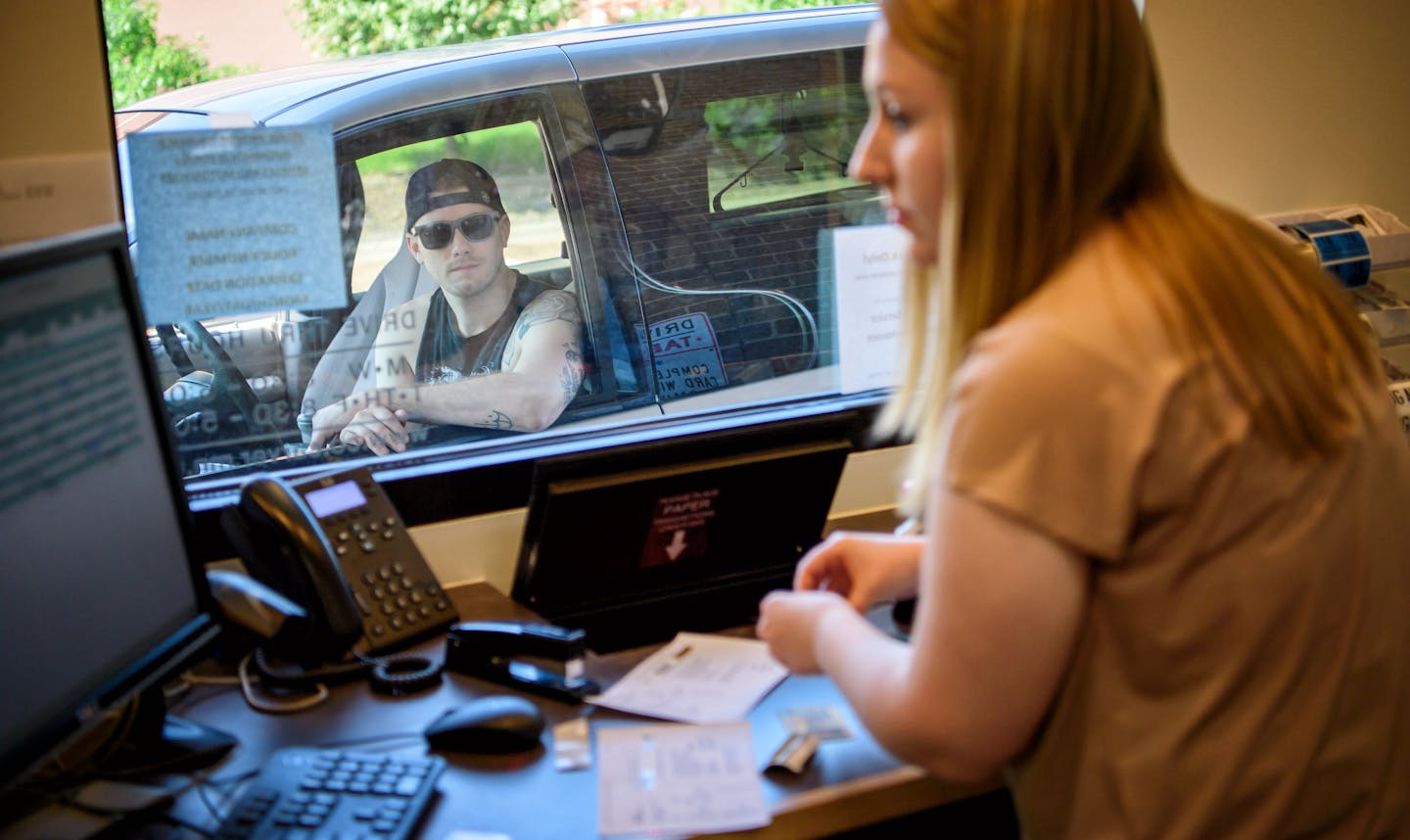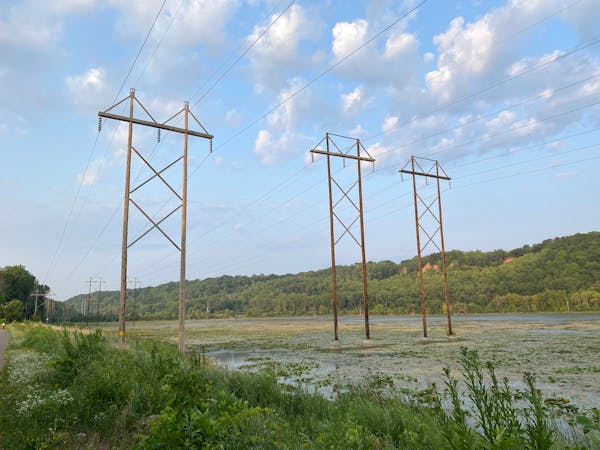Listen and subscribe to our podcast: Via Apple Podcasts | Spotify | Stitcher
When Michelle Lasswell recently renewed her vehicle registration, she was handed a new set of license plates to put on her car.
Installing them became a "huge ordeal," said Lasswell, a Northfield resident. She struggled to get her old license plates off and broke one of the rusty bolts holding them in place.
"The license plates themselves were fine," Lasswell said. "It made me question why I had to replace my license plates instead of just putting on new tabs."
Others like Misty Compaan wondered the same thing. She first received Minnesota plates in 2014 and last year the state gave her new plates for both of the family's vehicles.
"I just got old ones memorized," she joked. "It created quite a discussion in the household."
Lasswell and Compaan were among several readers who asked Curious Minnesota — the Star Tribune's community-powered reporting project — why Minnesota requires drivers to get new license plates every seven years.
License plates help law enforcement quickly identify vehicles, and show that the vehicle has been registered. State law requires that the plates can be read from a minimum of 110 feet away and are visible from 1,500 feet away.
In Minnesota, the aluminum license plates are covered with a thin, high-definition sheeting made by Maplewood-based 3M that helps with reflectivity and makes them highly visible in low-light conditions. If the covering peels, plates can become dull and hard to read. The film has a five-year warranty, said Tim Post, a 3M spokesman.
"After five years the reflective properties begin to decline because of exposure to the elements and road salt," he wrote in an e-mail. "3M studies show that reflectivity can drop as much as 50 percent between five and 10 years on the road."
The state gives each plate a life expectancy of seven years and replaces them accordingly, said Pong Xiong, director of the Driver and Vehicle Services (DVS) division of the Minnesota Department of Public Safety, which oversees registration requirements.
'The issue of the year'
Things used to be different, however.
Minnesota once had lifetime plates, meaning they stayed with the vehicle forever unless they became damaged or unreadable. That changed in the mid-1980s, when law enforcement groups and 3M pushed for a new law requiring all plates to be replaced and then regularly swapped out every several years, according to newspaper accounts from the time.
The law provoked controversy and drew a legal challenge that left it in limbo for several years. The state's public safety commissioner, Paul Tschida, said he was surprised by the public response, according to a 1986 Star Tribune article. "It has become the issue of the year," Tschida said.
Minnesota is among a number of states with seven-year replacement laws, including Indiana and North Carolina — which started the practice in 2021. In Montana, plates are replaced every five years. Iowa, Wisconsin, Ohio, Illinois and Florida are on a 10-year cycle. Washington state and Texas have no set timelines, after ditching their seven-year replacement rules.
Some special license plates — which are distinct from personalized plates — are exempt from Minnesota's seven-year replacement timeline. That includes special plates owned by veterans of the Vietnam, Korean and Iraq wars, as well as active and retired members of the National Guard. "Proud to be a Veteran" plates are exempt, as are special plates belonging to American Legion and VFW members and the recipients of certain military honors.
In cases of a collector's vehicle — defined as a vehicle at least 20 years old — the plate is valid without renewal as long as the vehicle is in Minnesota.
Minnesota vehicle owners pay $15.50 on top of registration costs when new plates are required. The fee covers the $6.39 cost for MinnCor, the state's prison industry program, to manufacture and distribute the plates. The state's plates are manufactured by prisoners at Rush City correctional facility.
Plates are replaced for free if they begin to delaminate or corrode within seven years, unless they have been damaged by a crash or neglect, said Becky Mechtel, a Minnesota Department of Public Safety spokeswoman.
Drivers can also request new plates at any time instead of buying tabs, Mechtel said. Last year more than 38,000 vehicle owners replaced their plates before the expiration period, in many cases to switch to a special plate like those promoting state parks or a school.
More characters?
Minnesota plates are configured with sequences that use three numbers and three letters. Starting with AAA 001 to ZZZ 999 and 001 AAA to 999 ZZZ, DVS has about 21.9 million possible combinations. Minnesota has more than 4.95 million registered vehicles, and so far sequences won't have to be repeated for about 20 years.
"We have not run out," Xiong said. But with more vehicles coming into the state and the population growing, "it's hard to predict when we might run out of numbers."
He said the state is looking at possibly adding a character or two to future plates.
"We do have choices," Xiong said. "We are actively making sure we have enough sequences."
With their new plates in hand, both Lasswell and Compaan asked what to do with their expired pieces of aluminum.
"One can only have so many license plates hanging in their basement or garage," Lasswell said.
Don't throw them in your curbside recycling bin, Mechtel said. Damaged, destroyed and out-of-date plates can be dropped off at MinnCor in Roseville to be recycled. Drivers can also drop them off at a recycler or any motor vehicle office that handles license plate transactions, Mechtel said.
If you'd like to submit a Curious Minnesota question, fill out the form below:
Read more Curious Minnesota stories:
Are motorcycles allowed to be louder than cars in Minnesota?
Why doesn't Minnesota require vehicle emissions tests any more?
Should you really let your car run on cold mornings before driving it?
Why are vehicle tabs more expensive in Minnesota than in other states?
Will electric vehicles pay their fair share for Minnesota's road costs?
Why do electric-vehicle owners pay a surcharge in Minnesota?






